In a time of social distancing and almost no traveling, making plans for a future vacation is the next best way to ease your wanderlust. But what will you choose as your first destination when things go back to normal? A favorite place that you’ve been constantly missing all these months? A new destination waiting on your bucket list? Or maybe you’ll want to feel more like an explorer than a tourist and go far away, to a remote place where not many people have been.
If that’s the case, here you have a list of 10 of the most remote places in the world. Some of these isolated locations feature below-freezing arctic temperatures, while others are tropical paradises lying in the middle of the ocean. They are not so easily reachable, most of them can be accessed only by boat or plane, and they’re still untouched by civilization, more or less. For each remote destination, find out what makes that place unique, interesting facts, and traditional foods you can try while there. (Or at least cook at home and experience faraway cuisines).
Read about 10 of the most remote places in the world and maybe plan to visit someday:
1. NUNAVUT, Canada
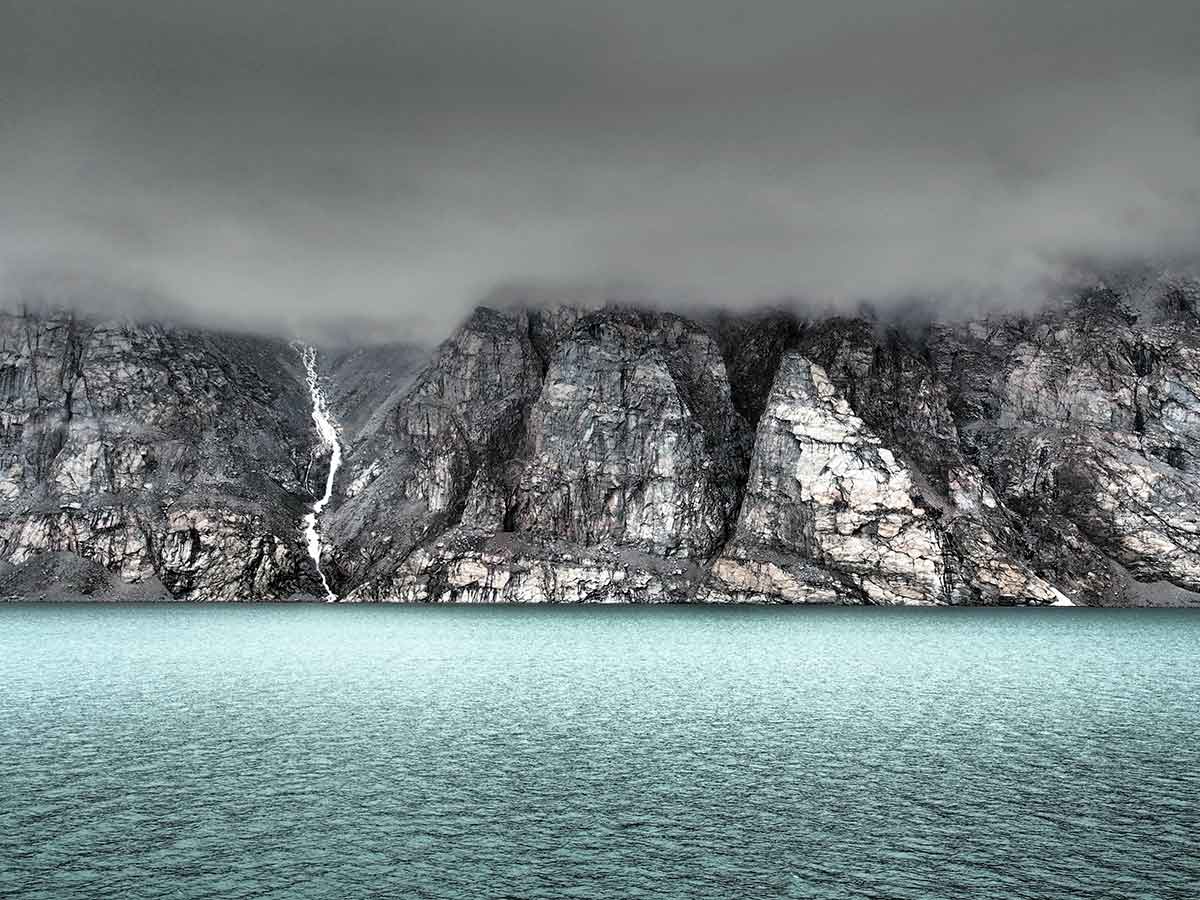
Located in the Arctic wilderness, Nunavut is the largest (and newest) Canadian territory. It’s one of the most remote places in the world, with less than 40.000 inhabitants spread over a vast area almost the same size as Mexico. The majority of the population is Inuit – this explains the origin of its name: in the Inuit language, Nunavut means “our land.” But its isolation doesn’t make this place less beautiful. Be ready to see rich wildlife, especially on Baffin Island (one of the main islands) home to a large population of narwhals, seals, white belugas, and polar bears. The wild habitat is not the only thing that makes Nunavut attractive to visitors. This area has everything an outdoor enthusiast could ever want: you can go on an Arctic safari, visit one or more of their National Parks (Sirmilik National Park, Auyuittuq National Park, or Katannilik Territorial Park), see the Northern Lights, or find out more about the Inuit culture.
What makes Nunavut special:
♦ Amazing Arctic Wildlife
♦ Best place in Canada to see the Northern Lights (from October to April)
♦ The Inuit art and culture
Interesting things about Nunavut:
♦ It’s home to the most northernmost permanently inhabited place in the world: Alert
♦ More than 80% of the inhabitants are Inuits
♦ The old Nunavut license plates issued in 1999 have a unique design, in the shape of a Polar bear
♦ It’s easier to get arms than alcohol, and a large percentage of the Nunavut’s inhabitants are smokers
♦ In Iqaluit (the capital), there’s the Road to Nowhere: walk, bike, drive or ski in the winter on this winding road that goes from the city until it eventually ends in the middle of nowhere
Traditional foods to try in Nunavut:
♦ Arctic char, seal, caribou – consumed dried or raw
♦ Bannock – traditional Inuit bread
♦ Labrador Tea
How to travel to Nunavut:
You can reach Iqaluit by air or sea only. Most of the flights are from Ottawa and are operated by Canadian North company.
2. ITTOQQORTOORMIIT, Greenland
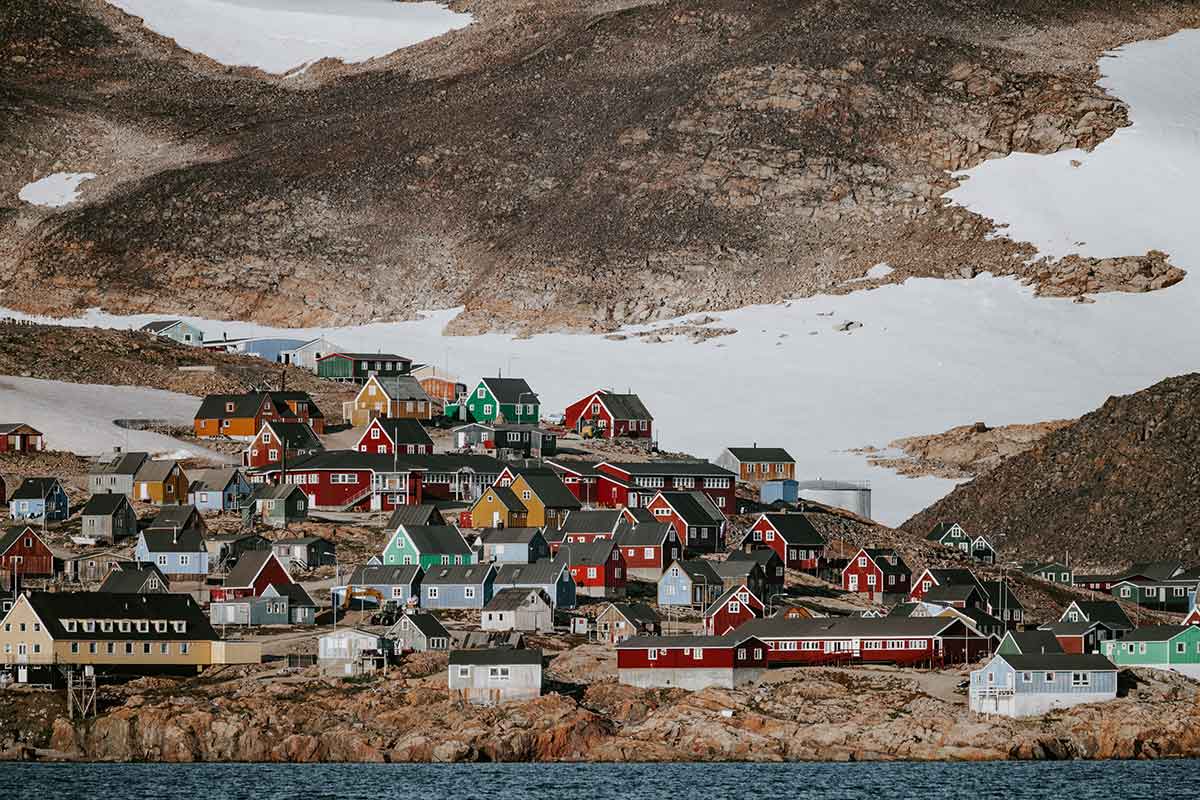
When a place is remotely located inside one of the most remote areas in the world, then we can say we have a faraway destination. Ittoqqortoormiit is a small town of hunters and fishermen in the eastern part of Greenland, and its name means in the Eastern Greenlandic dialect “Big House Dwellers.” You can reach this remote settlement by sea (only during the summers, when the ice can be broken by cruise ships) or by plane (2 times a week). Once there, you will discover a place that it’s not only remote but amazingly beautiful. Ittoqqortoormiit is located on the largest and longest fjord system in the world, and here you can see one of the world’s biggest icebergs.
What makes Ittoqqortoormiit special:
♦ You can see the Northern Lights
♦ Experience life in a small arctic town with only 345 residents and only one grocery store
♦ Skiing and dog sledding
♦ See Arctic wildlife and the biggest icebergs in the world
Interesting things about Ittoqqortoormiit
♦ The largest and longest fjord system in the world
♦ There are no roads; you can explore the place by boat only
♦ It has only one pub open on Fridays. The pub is located near the city’s hospital.
♦ There’s only a guest house where visitors can stay
♦ You can order things from Amazon, but the orders will be delivered every two months by plane from Iceland
Traditional foods to eat in Ittoqqortoormiit
♦ Suasaat – a traditional Greenlandic soup
♦ Blubber – the fatty whale skin
♦ Dried Cod
How to travel to Ittoqqortoormiit
Ittoqqortoormiit is accessible by air or by sea. There are regular flights from Reykjavik, Iceland, but to get to this small isolated village, you need a helicopter ride from the neighboring Nerlerit Inaat airport! Lately, Ittoqqortoormiit has become a destination point for sea cruises. But nine months a year is impossible for any vessel to break the thick ice and reach the town.
3. SVALBARD ISLANDS, Norway
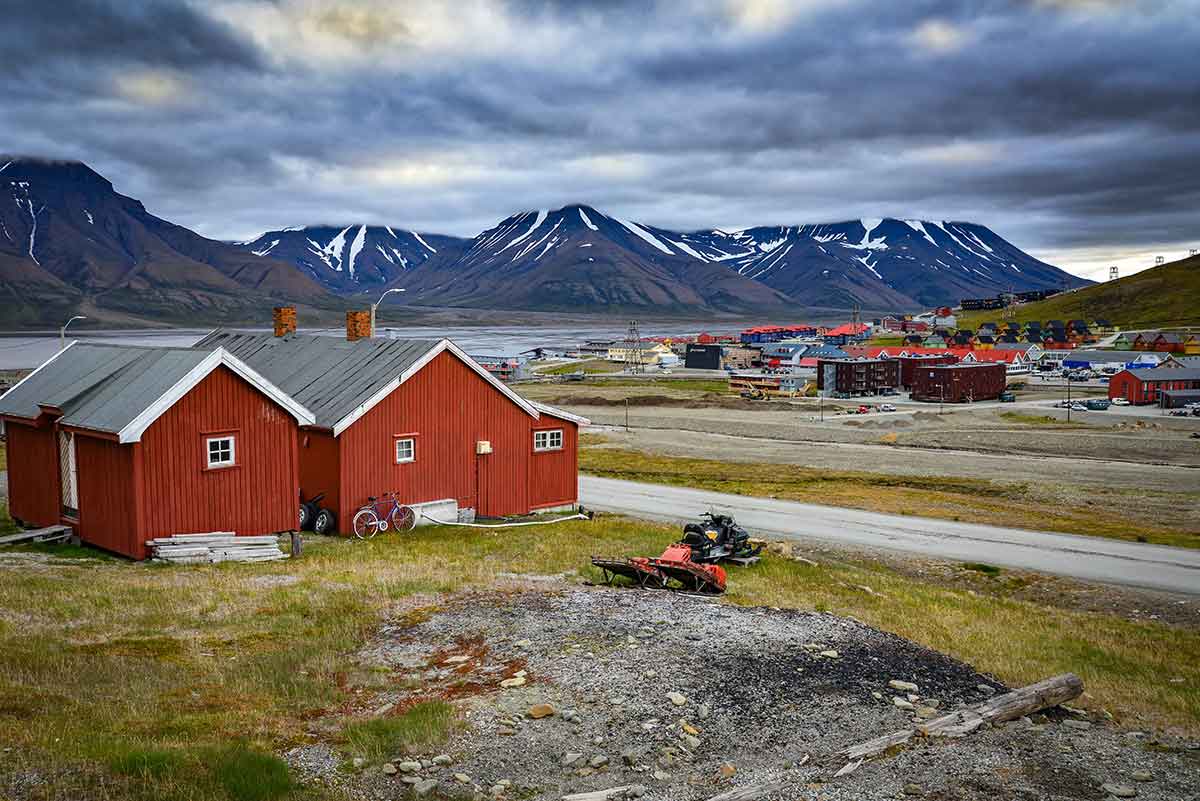
Between Norway and the North Pole, there’s the Svalbard archipelago, a group of tiny islands in the Arctic Ocean. The islands are an unincorporated internal area of Norway, and their name “Svalbard” has its roots in Old Norse: “svalr” – cold and “bard” – edge. The abundance of arctic wildlife here is impressive: more polar bears than people have their home on Svalbard Islands!
You can explore Svalbard Archipelago in different ways, depending on the type of activities that suits you more. If you are interested in discovering how life in a town near the North Pole can be, spend your time in Longyearbyen, the island’s main settlement. Longyearbyen is a small town full of life and offerings for travelers. You wouldn’t expect to find, for example, a sushi restaurant or a festival in a place that is remotely located, but here they are! For more adventurous exploring, take a fjord cruise through the Esmark Glacier & Barentsburg, or go by snowmobile to see the magnificent Tunabreen glacier.
What makes Svalbard special:
♦ See the Northern Lights
♦ See the Midnight Sun: between April 20 and August 22 the sun doesn’t set at all
♦ Experience life in an arctic city
♦ Ski on a glacier in the middle of the summer
♦ Spend Christmas near the North Pole
Interesting facts about Svalbard:
♦ There are seven national parks in Svalbard
♦ More than half of their area is covered with glaciers
♦ There is no unemployment or welfare system
♦ It has the northernmost Sushi restaurant in the world
♦ You don’t need a visa to move here – you can live and work in Svalbard indefinitely no matter the country of citizenship
♦ There’s a jazz festival taking place in January (Polar Jazz)
♦ If you want to take a trip outside Spitsbergen, the main island, you must inform the Governor, and special insurance might be needed.
Traditional foods to eat in Svalbard:
♦ Lapskaus – a thick stew made with beef, potatoes, and other vegetables.
♦ Polarbrod – soft bread.
♦ Reindeer
♦ Vaffelkake – sweet waffles served with jam
♦ Kjøttkakers – Norwegian meatballs
♦ Seifilet Fersk – fresh fish filet
How to travel to Svalbard:
By plane from Oslo or Tromsø.
4. NAURU ISLAND, Oceania
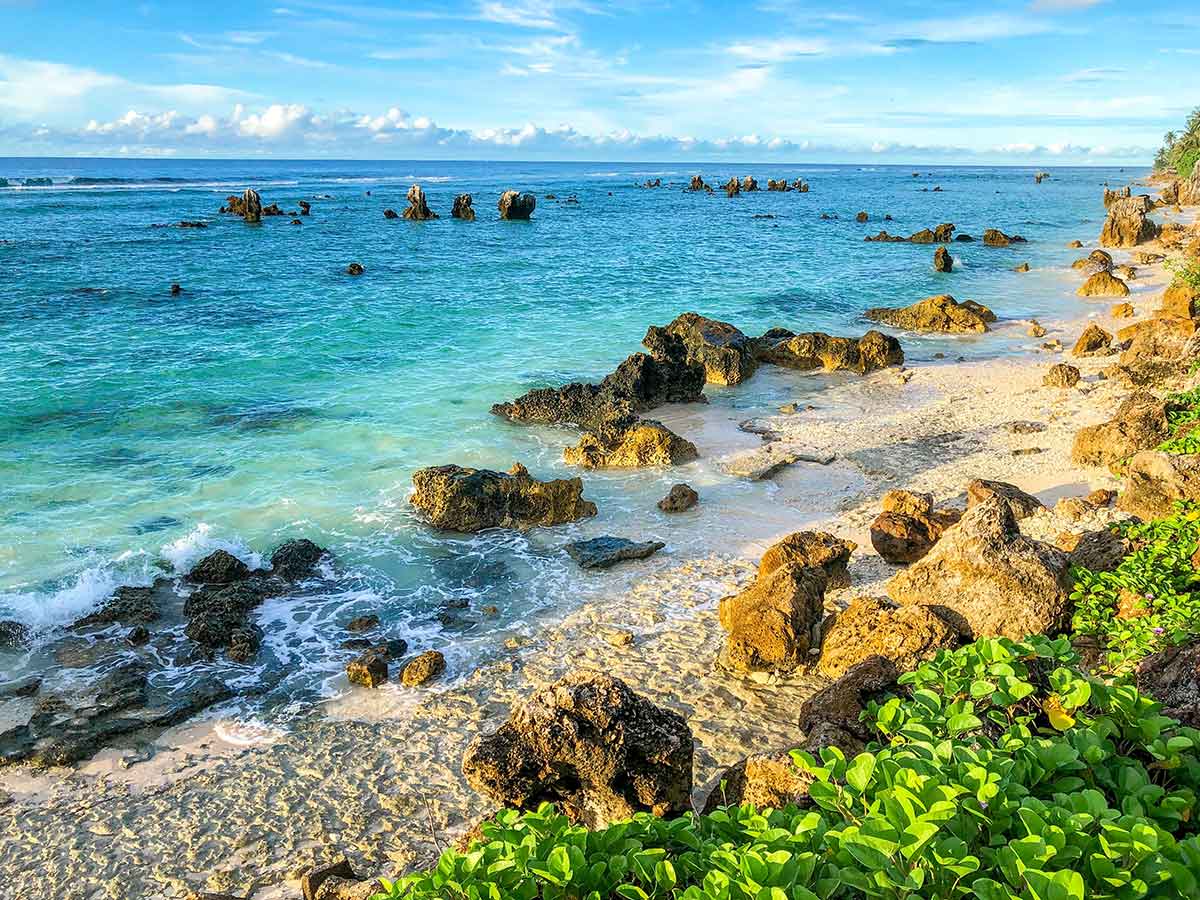
Nauru is a small coral island in the Pacific Ocean, and it was formerly known as Pleasure Island. With a small area of only eight square miles, the Republic of Nauru is the smallest in the world, and the third smallest country in the world, after the Vatican and Monaco. Traveling to Nauru can be difficult because of the complicated process of obtaining a visa. And that makes Nauru one of the less-visited countries in the world! But if you get the chance to visit this remote island, go to Anibare Bay to see the tropical beaches, to Buada Lagoon – a freshwater lagoon surrounded by lush tropical vegetation or walk or bike the entire island.
What makes Nauru Island special
♦ It has a freshwater lagoon surrounded by tropical forest
♦ You can walk the entire island in approximately 6 hours
Interesting facts about Nauru Island
♦ Because of its small size, you can drive through the island in less than 1 hour
♦ It has the highest unemployment rate in the world, 95%
♦ 90% of the population suffer from obesity and 40% from diabetes
♦ Their official language is Nauran, a Pacific island language, but English is spoken as well
♦ Credit cards are rarely accepted on the island
How to travel to Nauru
By plane from Brisbane (Australia) or from one of the adjacent islands: the Marshall Islands, Fiji, or Micronesia.
Traditional foods to eat in Nauru
♦ Seafood
♦ Coconut fish
♦ Chinese and Filipino dishes
READ MORE: Aloha State Eats – Best foods to try in Hawaii
5. TRISTAN DA CUNHA, British Overseas Territory
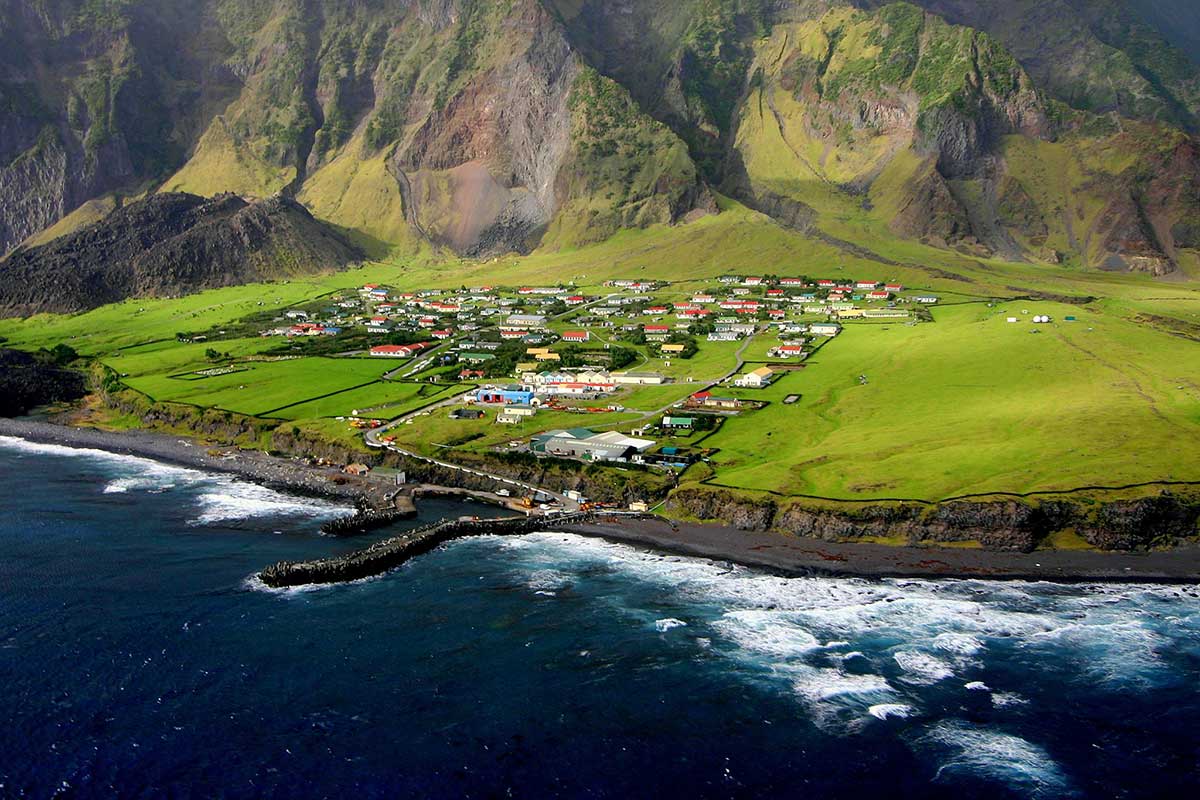
This rocky archipelago is located in the South Atlantic, between South Africa (1750 miles to the east) and South America (2000 miles to the west). Because of its remote location, Tristan da Cunha is considered the most isolated island in the world. Less than 300 people call this faraway island home, but they are warm and welcoming and good guides to show you around. Indeed, this is not the destination for a typical vacation but the place to go if you want to find complete isolation. It rains a lot, and you won’t find many accommodations (in fact, there is not a single hotel on the island), but you can stay in one of the island homes.
What makes Tristan da Cunha special
♦ Is the most isolated island in the world
♦ It has unique wildlife: you can spot albatrosses, penguins, dolphins, and whales.
Interesting facts about Tristan da Cunha
♦ People living on this island have only nine different last names
♦ There are no restaurants or hotels
♦ There is no mobile phone network on the island
♦ There is only one grocery store
♦ In 1961, after the volcano on the island erupted, all the population had to be evacuated. Many of them returned after two years.
♦ One of the islands in the Tristan da Cunha archipelago is called “Inaccessible Island.”
Traditional foods to eat in Tristan da Cunha
Potato cakes
How to travel to Tristan da Cunha
Only by boat from Cape Town (a six-day journey). There is no airport; the island’s terrain is too rocky for an airplane to land there.
6. EASTER ISLAND, Chile
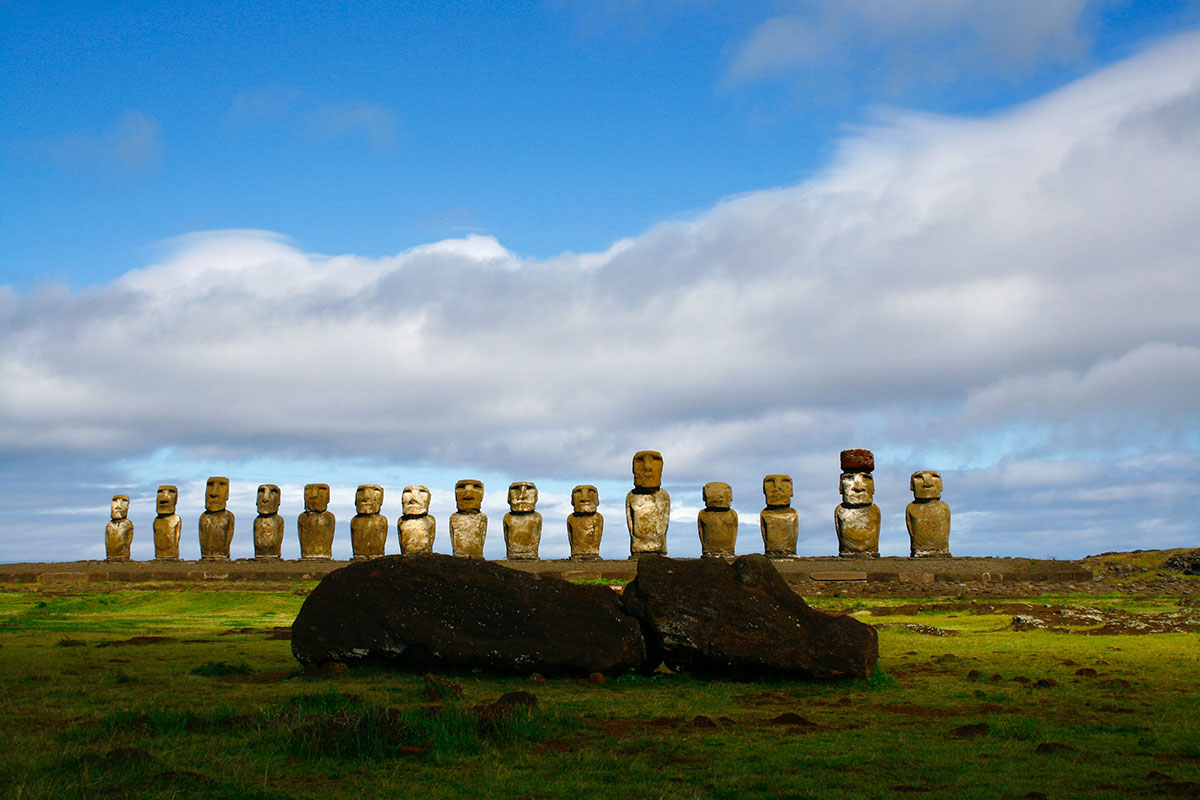
More than 2000 miles away from Chile, there’s Easter Island, one of the world’s most isolated islands. This place is famous for its ancient rock sculptures – the Moai statues, sculpted by the Rapa Nui people. The best time to travel to Easter Island is in February, when Tapati, a traditional festival celebrating Rapa Nui culture takes place. If you want to have a typical island experience, visit the white-sand beaches of Anakena and Ovahe. Anakena is considered Easter Island’s birthplace – a long time ago, the first tribes arrived here. On Ovahee beach, giant waves can wash away all the sand; it takes time to return along with the waves.
What makes Easter Island special
♦ Ancient Moai Statues, an heritage of the ancient Polynesian people called Rapa Nui
♦ Tropical white sand beaches
♦ The world’s largest Polynesian festival, Tapati, takes place every year in February
Interesting facts about Easter Island
♦ Easter Island is on UNESCO World Heritage List
♦ Both Moai statues and Ahi (the ceremonial platforms on which the statues are sitting) are protected by law and should not be approached under any circumstances
♦ The island has a couple of “recuperation zones” where trees are planted. These areas can be accessed only on foot or on horseback.
♦ Be careful when you walk under the coconut trees, especially on Anakena Beach; coconuts can fall anytime
♦ In the winter (June – August) is dark in the morning
♦ The island has many stray dogs
Traditional foods to eat on Easter Island
♦ Umu Rapa Nui – a traditional dish with meat, fish, sweet potatoes, and faro, covered in banana leaves and slowly cooked in an earth oven
♦ Tunu Ahi – fresh fish cooked on heated volcanic stones
♦ Local tuna and lobster
♦ Tuna empanadas
♦ French fries with shrimp sauce
♦ Po’e – sweet sponge cake made with bananas, cassava, or pumpkin
How to travel to Easter Island
Six hours by plane from Santiago, Chile, Lima, Peru, or Tahiti.
READ MORE: My top 10 experiences in Oahu, Hawaii
7. SOCOTRA, Yemen

Socotra is a small island that lies in Yemen’s Gulf of Aden in the Indian Ocean. Otherwise known as the “Alien Island”, it has a strange flora and fauna, with species you can’t find anywhere else in the world: Dragon’s Blood Trees, with the treetops resembling a flying saucer, the Desert Rose Trees, or the Cucumber Trees. Along the coast, there are white sand beaches surrounded by palm trees. Although there are currently four hotels on the island, tourists’ favorite accommodation is camping on one of these beautiful beaches. But it’s not easy to travel here to see this alien beauty, at least not right now. Since the start of the civil war in Yemen, the island has been practically off-limits for visitor
What makes Socotra Island special
♦ Unique flora and fauna
♦ It’s a UNESCO World Heritage Site
♦ Camelback rides
♦ Surfing, scuba diving, and snorkeling
Interesting facts about Socotra Island
♦ It has no public transport
♦ Soqotri is the native’s unwritten language
♦ A poetry competition takes place every year on the island
♦ Many of the female residents on the island have a unique DNA group found in no other humans in the rest of the world
Traditional foods to eat on Socotra Island
♦ Mandi – the traditional Yemen dish made with meat, vegetables, and spices
♦ Maraq – a Yemeni lamb broth soup
♦ Zerbian – a lamb dish cooked with rice and saffron
♦ Sabayah – sweet pastry with honey and sesame seeds on top
♦ Fresh fish
♦ Oranges
♦ Dates
How to travel to Socotra Island
By plane from Sanaa (Yemen) or Cairo (Egipt). Not recommended by boat due to the intense pirate activity around the island.
8. SIWA OASIS, Egipt
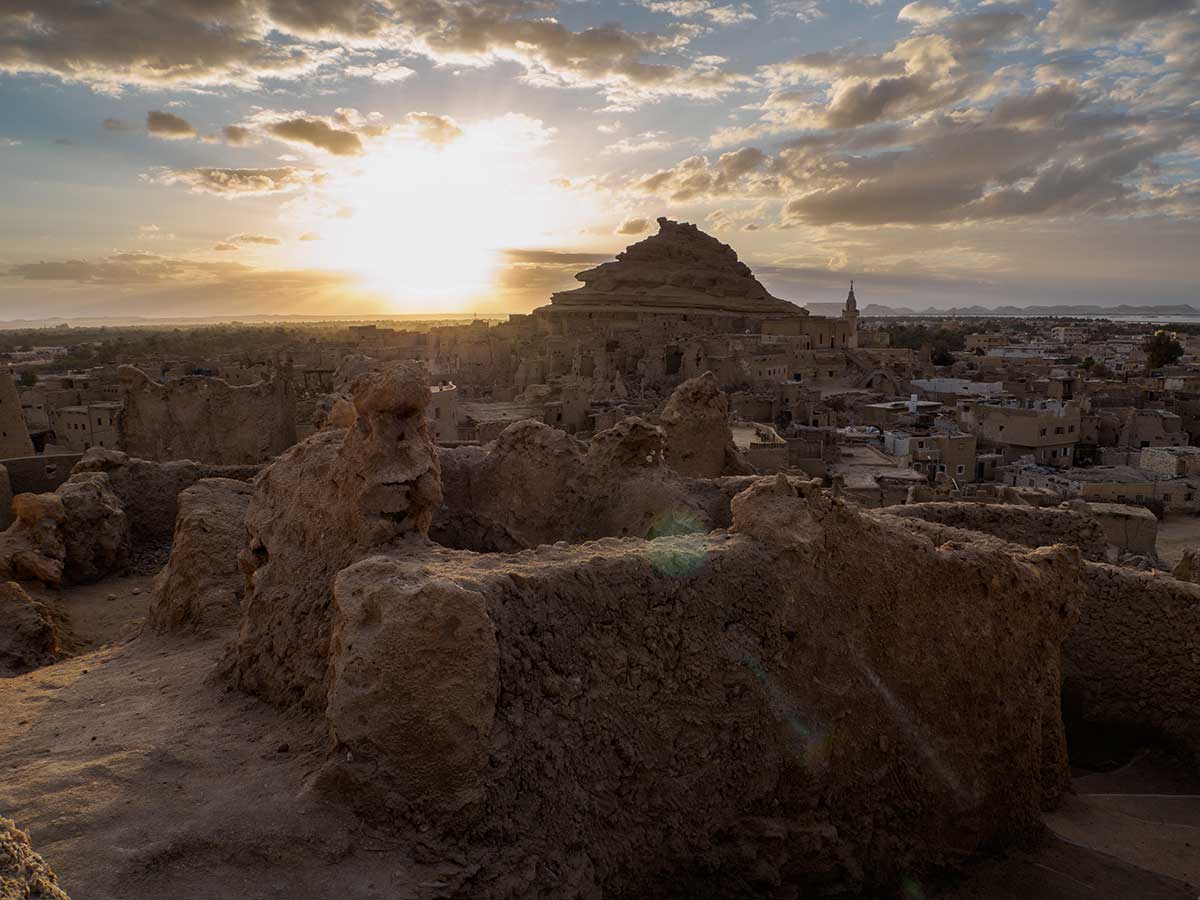
The hottest place on this list, Siwa Oasis, is located in Egypt, in the middle of the Western Desert, between the Great Sand Sea and the Qattara Depression. The first road to the coast was built in the 1980s. Until then, Siwa had almost no connections with the outside world. The only links were hazardous journeys through the desert, used to export dates and olives. In this remote place, the inhabitants (Berbers, an old North African tribe), have preserved their specific desert culture. They still speak Siwi, an ancient dialect, and cherish their Sufism’s old practices (Islamic mysticism). The best time to visit the oasis is during the winter months when temperatures are more bearable. Among the oasis’s attractions are Cleopatra’s Bath – a rock pool created by a mineral spring where you can bathe; Temple of the Oracle – a temple built in the 6th century BC and dedicated to Zeus, and the Mountain of the Dead – ancient tombs dating to the Roman period.
What makes Siwa Oasis special
♦ You can swim in Cleopatra’s Bath
♦ See ancient mummies at Mountain of the Dead
♦ Make a Desert Safari
♦ Stay at Adrere Amellal, an eco lodging hotel built entirely from mud and salt, with no electricity and lit only by candlelights
♦ Discover the Berber culture
♦ Make a bath of hot sand at Gebel Darkur
Interesting facts about Siwa Oasis
♦ It produces the best dates in the world – Siwa Dates
♦ Locals still speak the old Barber language – Siwi (English is spoken too)
Traditional foods to eat in Siwa Oasis
♦ Kibda – liver sauteed in olive oil or with a spicy tomato sauce
♦ Macarona – a type of pasta cooked with coriander and cumin
♦ Molochiya – a vegetable similar to spinach, cooked as a dip with garlic, pepper, and coriander
♦ Reearin – a dish made of lentils cooked with molochiya and hot green pepper.
♦ Shakshouka – minced liver (chicken or sheep) with vegetables and with an egg on top
♦ Ashengoot – roasted duck or chicken wrapped in a crepe
♦ Siwan Tea
♦ Siwa Dates
How to travel to Siwa Oasis
By bus from Cairo
9. LA RINCONADA, Peru
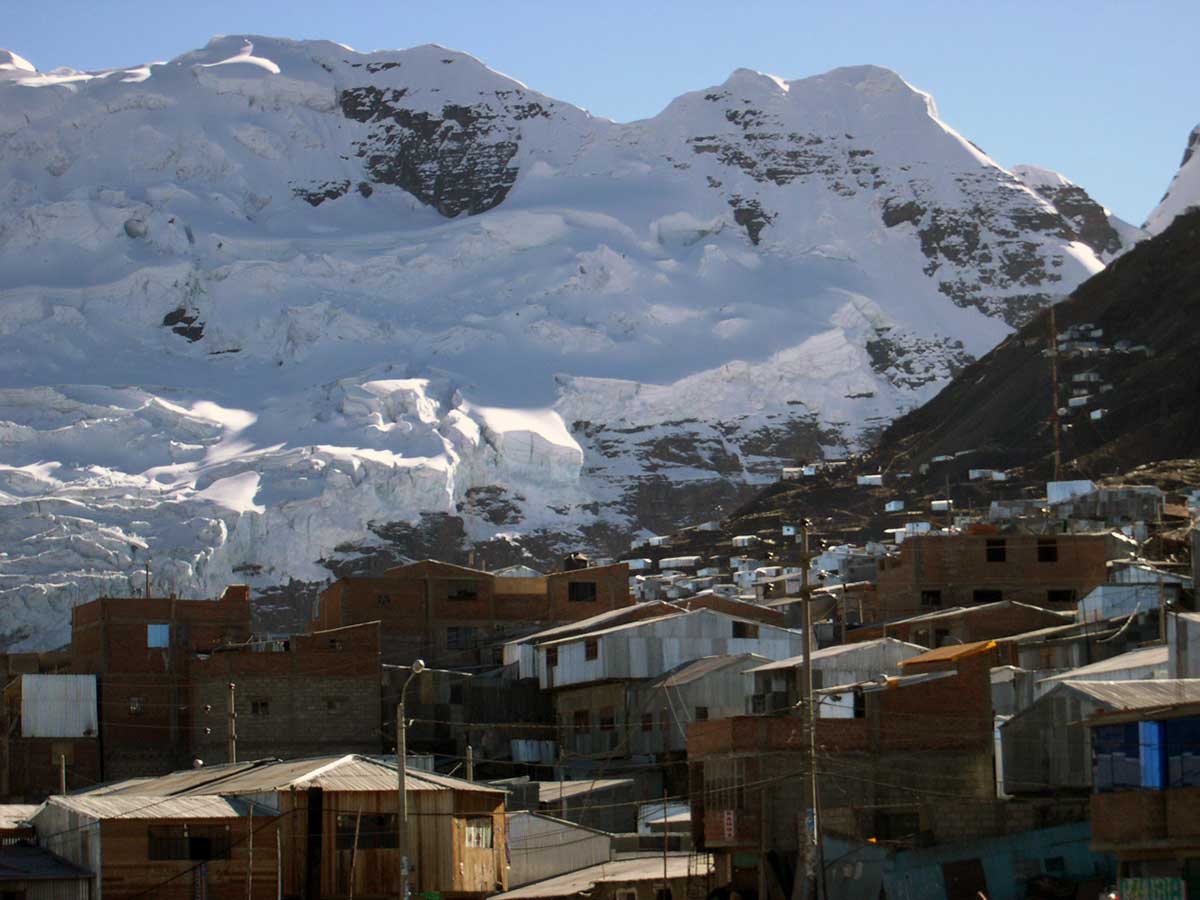
Image source: Hildegard Willer/Wikimedia Commons
La Rinconada is the highest permanent settlement in the world, located at 16700 ft (5100 m) above sea level in the Andes. This small town lies at the foot of the glacier Aucita (otherwise known as La Bella Durmiente – The Sleeping Beauty) and is located near a gold mine (many of the people living here are miners). Since the mining flourished, the same happened with La Rinconada’s population; more than 60.000 people live now in this harsh environment. Visiting La Rinconada is not easy. Altitude sickness can happen even with prior acclimatization and spending a long time at this high altitude could impact your health.
What makes La Rinconada special:
♦ It’s the highest city in the world
♦ The breathtaking alpine scenery surrounding the city
Interesting facts about La Rinconada
♦ La Rinconada has a climate similar to the west coast of Greenland, even though it is located at only 14 degrees from the equator
♦ Altitude sickness is very common
♦ The city doesn’t have plumbing or sanitation systems
♦ There’s mercury contamination because of the mining process
Traditional foods to eat in La Rinconada
There aren’t many restaurants in La Rinconada, but if you visit the Andes, you might want to try some of the traditional Andean Foods:
♦ Adobo – a spicy red soup
♦ Rocoto Relleno – hot peppers stuffed with minced meat and baked in the oven
♦ Cuy Chactado – fried guinea pig
♦ Pachamanca – marinated meat and vegetables slowly cooked in a ground oven
♦ Papa a la Huancaina – boiled potatoes with a creamy cheese sauce
♦ Chicha de Jora – the traditional Peruvian drink made from local yellow corn. It’s considered the sacred drink of the Incas
How to travel to La Rinconada
By bus or truck from Puno.
10. COCOS (KEELING) ISLANDS, Australia
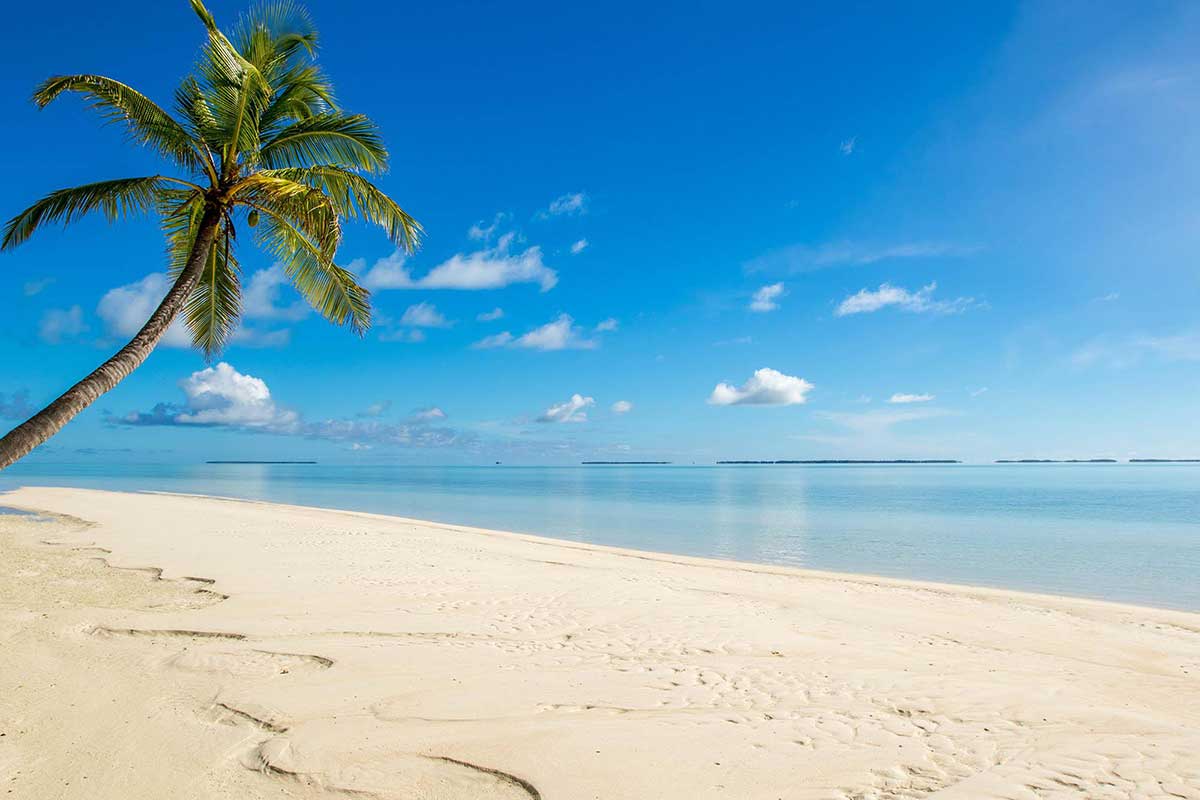
Cocos Islands are a small archipelago located in the Indian Ocean, between Australia and Sri Lanka, but closer to Indonesia. The islands are an Australian external territory. The archipelago consists of 27 small atolls, but only 2 of these are inhabited – Home Island and West Island. The population is scarce; no more than 600 people live on one of these two coral islands. While on the West Island, the majority of the population is European, on the Home Island still live the Cocos-Malay people. The Cocos-Malays, or Cocos-Islanders, are the descendants of the Malay workers brought to the island in the 1830s. They speak a Malay dialect, most of them are Muslim, and they have maintained their unique culture with colorful celebrations and weddings.
The islands are what you expect a tropical paradise to be: white sand beaches surrounded by coconut trees and teal waters. Recently, Cossies Beach (on Direction Island, 30 minutes by ferry from West Island) has received the name “Australia’s most beautiful beach.”
What makes Cocos Islands special
♦ Exotic tropical beaches and coral reefs
♦ Discover the local Cocos Malay Culture
♦ Go diving and snorkeling
♦ Take a motorized outrigger canoe safari
♦ Enjoy Australia’s most beautiful beach – Cossies Beach
Interesting facts about Cocos Islands
♦ Through the centuries, the islands had different names: Cocos Islands (from 1622), Keeling Islands (from 1703), Cocos – Keeling Islands (from 1805), and Keeling – Cocos Islands in the 19th century. Since 1955, the official name of the islands is Cocos (Keeling) Islands.
♦ But what’s the significance of this name? William Keeling was the explorer who discovered the islands in 1609. And Coconut comes from the many coconut palms found here.
♦ They have 9.3 miles of highway
♦ Every year takes place the Lagoon swimming competition – the participants have to swim between the two main islands – Home Island and West Island
Traditional foods to eat in Cocos Islands
♦ Fresh fish and coconuts
♦ Nasi Lemak – traditional spicy breakfast with rice, anchovies, and vegetables
♦ Ayam Begana – chicken with rice
♦ Maggi Goreng – noodles
How to travel to Cocos Islands
By plane from Perth, Australia. The flights are twice a week with a layover on Christmas Island.
Pin for later:

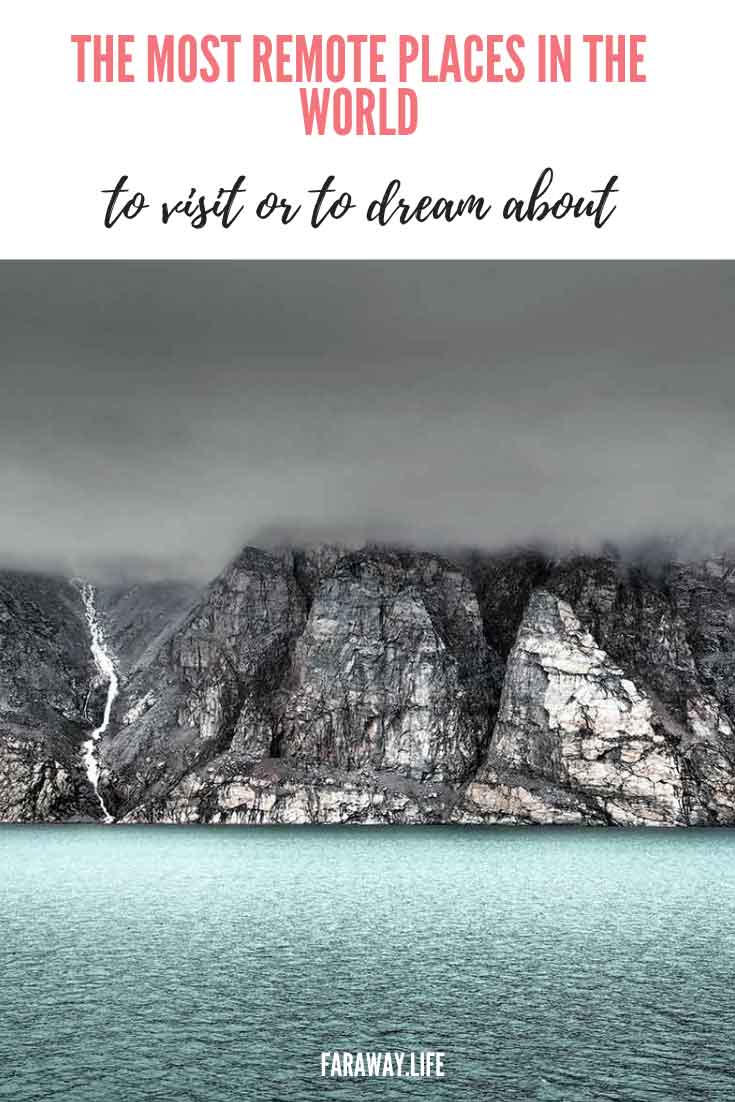

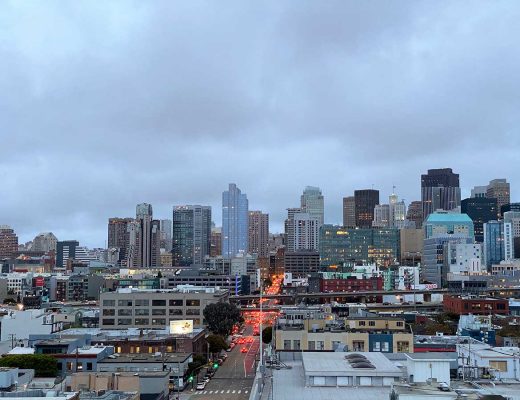

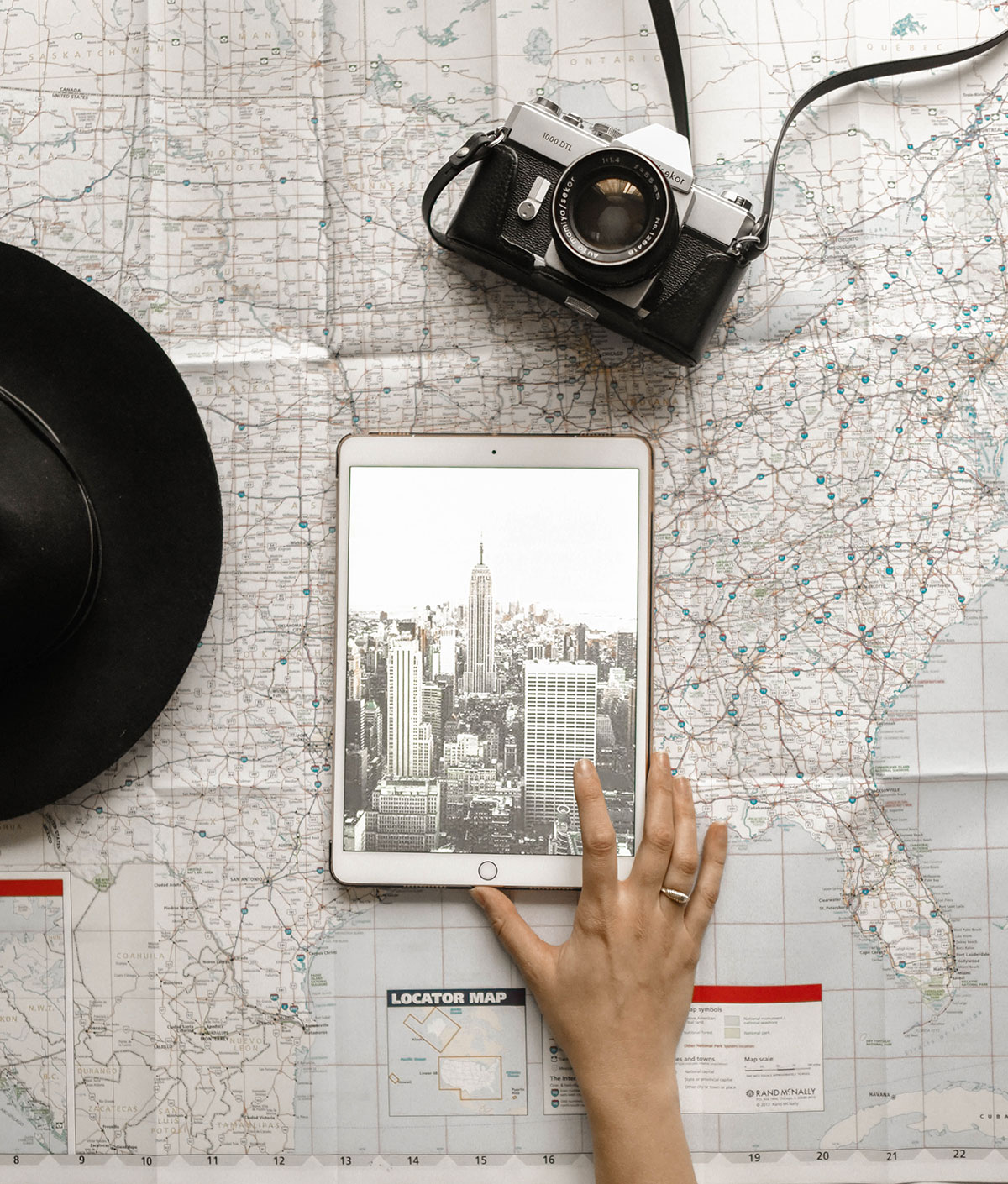
No Comments